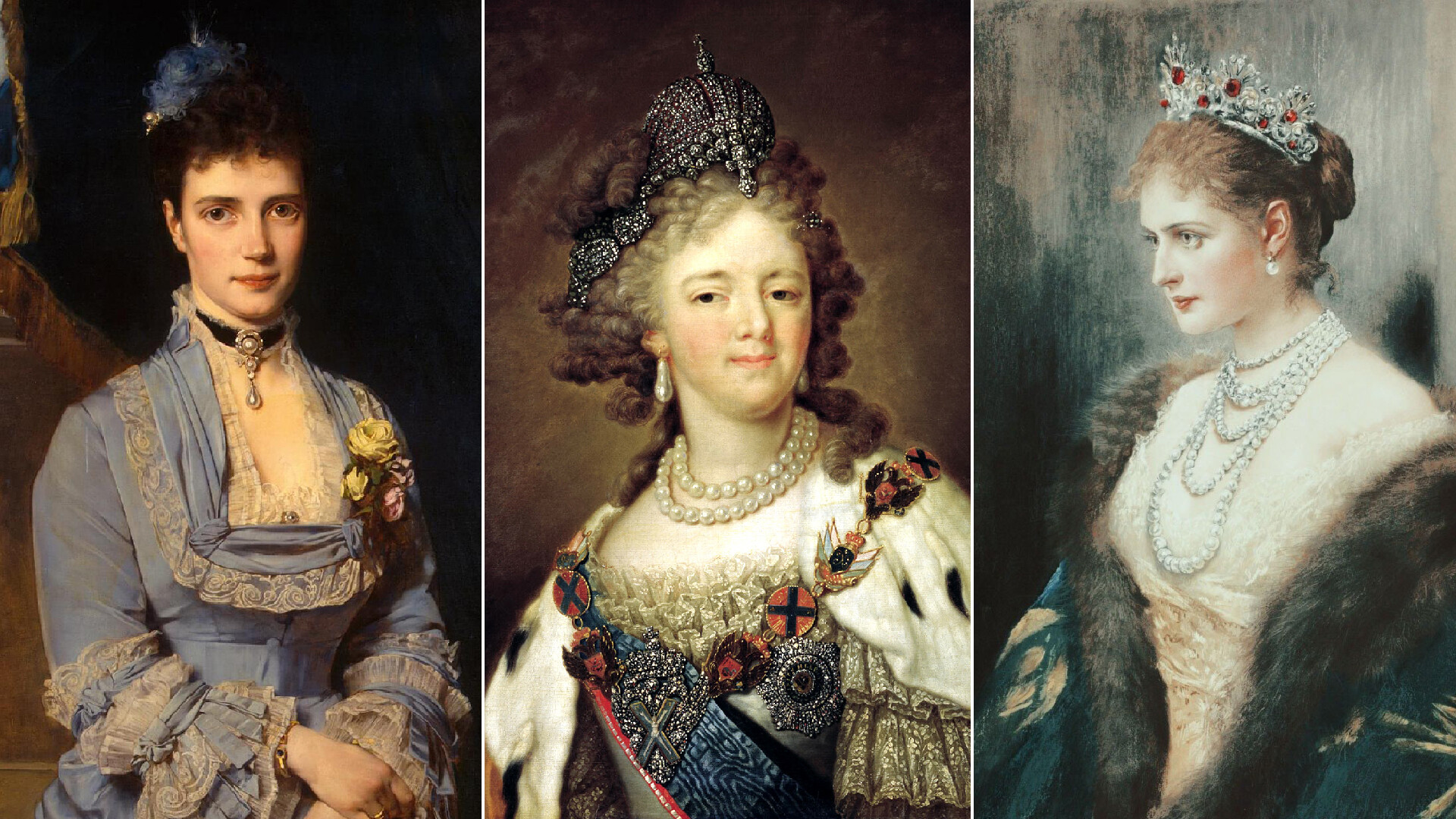
The portrait of the Grand Duchess Maria Fedorovna, 1874, Heinrich von Angeli; the portrait of the Empress Maria Fedorovna, 18 century, Vladimir Borovitsky; the portrait of Empress Alexandra Fedorovna, 1900, József Árpád Koppay.
State Hermitage Museum; Astrakhan State Art Gallery; The Alexander Palace ForumsEach empress dressed in accordance with the trends of her time. There were, of course, certain changes in styles, colors, and the choice of fashion houses. However, what remained unchanged was their sense of taste.
Catherine II married the heir to the throne Peter III in 1745, at the age of 16. It is not known who designed the dress of the would-be ruler, but it is a typical example of 18th century ceremonial attire. It was usually sewn with golden or silver silk brocade, embroidered with matching thread.
A ceremonial dress typically consisted of a sleeveless bodice with a low neckline, with the skirt sometimes measuring over 1.5 meters in width. The effect was achieved thanks to the use of hoops, which acted as frames for the skirt, propping it up into a stiff, bell-like shape.
In her memoirs, Catherine recalled that her wedding dress was embroidered with silver along the seams and weighed a ton!
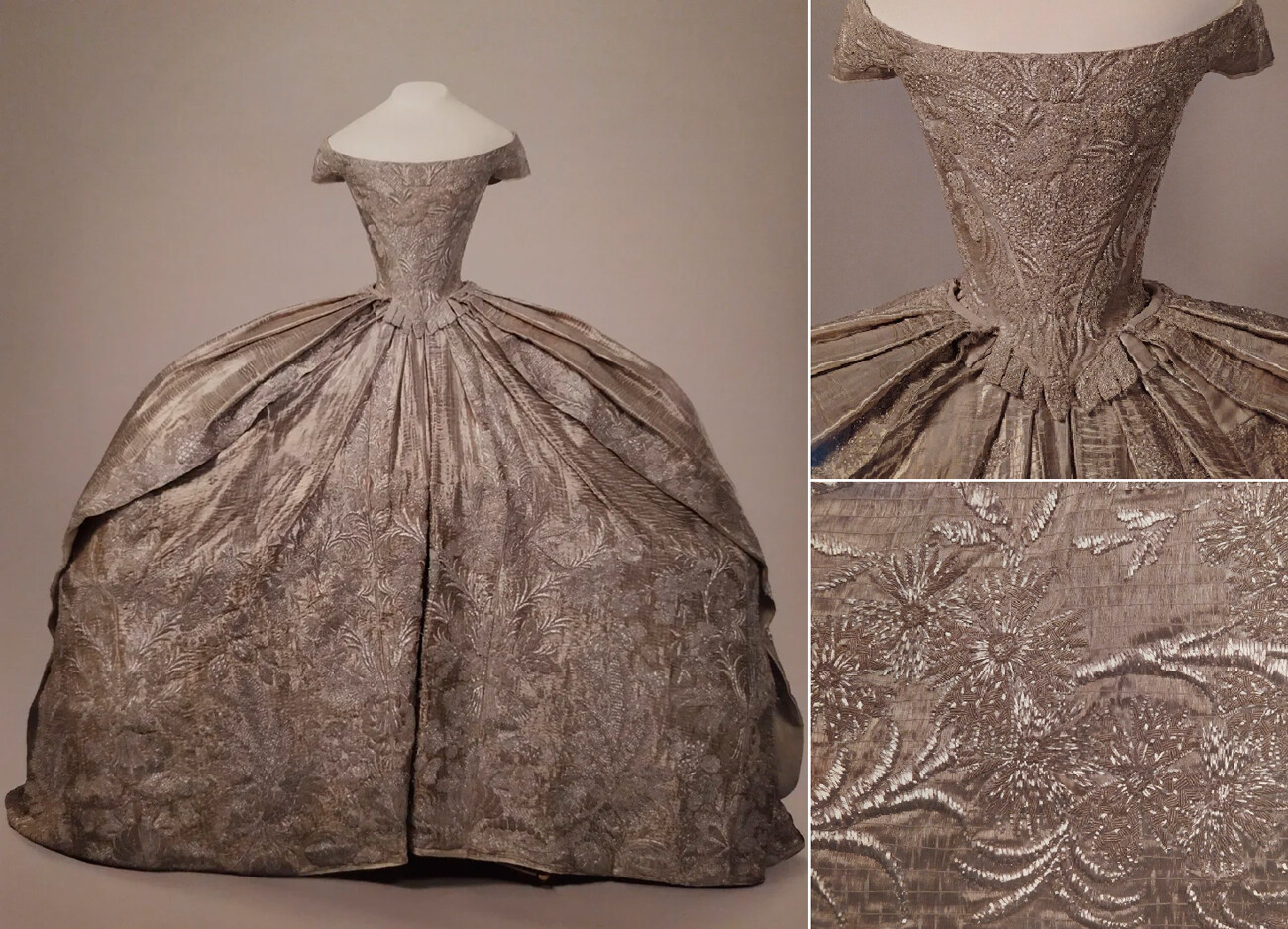
The wedding dress of Ekaterina Alexeevna, future Empress Catherine the Great. Russia, 1745.
The Armoury Chamber/Moscow Kremlin MuseumsEarl Fedor Golovkin, the emperor’s master of ceremonies, depicted the empress as a very graceful woman: “What exhausts other women does nothing to her. Even during her pregnancy, she won’t take off her ceremonial dress, and in between dinner and a ball, when other women don a dressing gown, she, invariably wearing a tight corset, will do correspondence, embroidery and will sometimes even work with portrait medalist Lamprecht”.
The dress is sewn in the eclectic style and dates back to the 1820s, when the trend for Empire-styled clothing was already becoming a thing of the past, giving way to the Biedermeier style. The high waist, the meander pattern and the short, puffed sleeves are still in the Empire style, while the lace welt of the neckline and sleeves, the bodice trim and the color point to a certain shift to the Biedermeier style. The dress is sewn with moire - silk fabric with a wave effect, which makes the dress ripple.
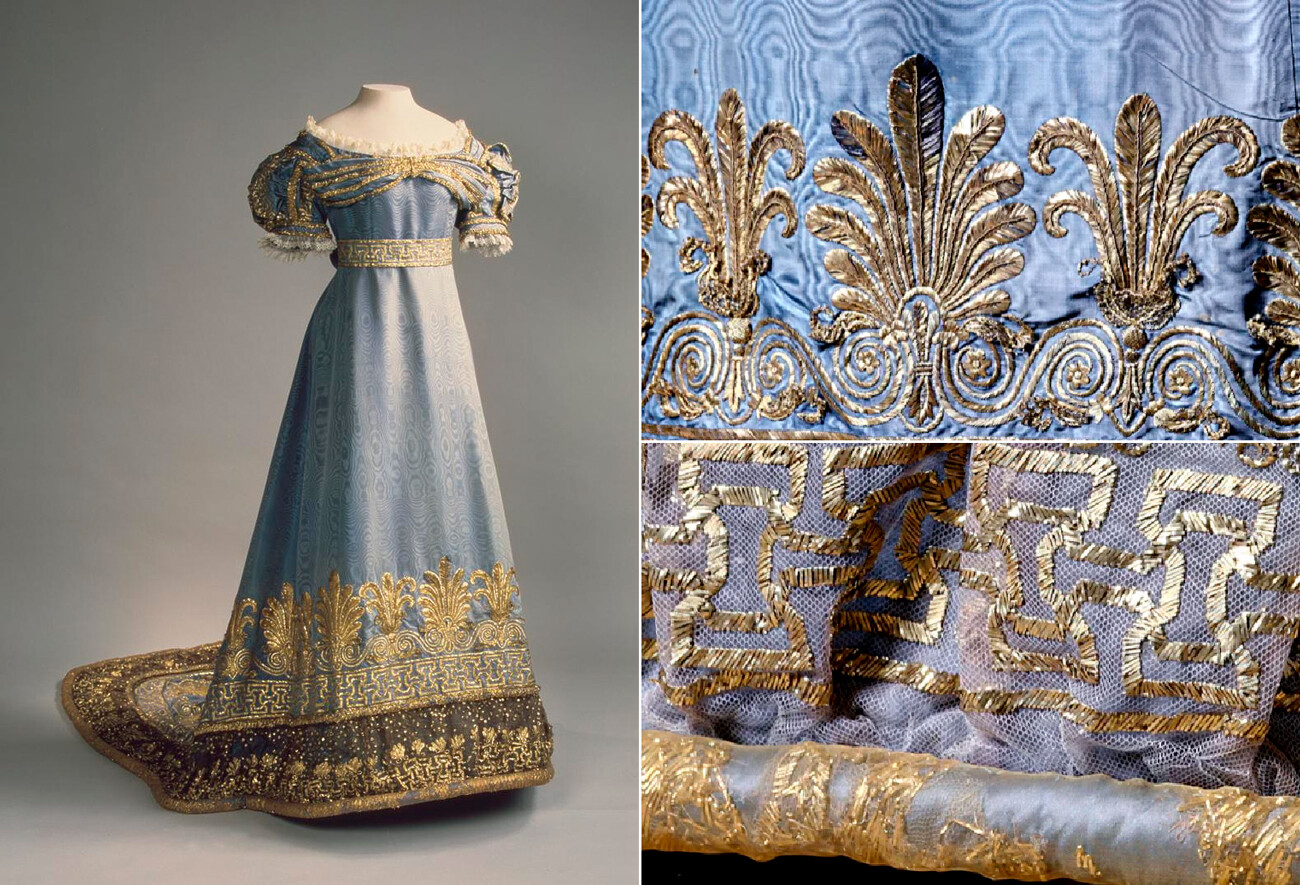
Ceremonial dress of Maria Fedorovna.
State Hermitage MuseumMaria Alexandrovna was the one to start the tradition of coronation in “a Russian-style dress”. Following in her footsteps , Empress Maria Fedorovna, the wife of Alexander III and mother of Nicholas II, as well as Alexandra Fedorovna, Nicholas II’s spouse, were crowned in very similar, almost identical gowns. Prior to that, coronation dresses were sewn in accordance with the owner’s tastes and the fashion of the day: after Maria’s coronation, they had increasingly begun to resemble the Russian national sleeveless dress (sarafan). The European cut stayed intact, while wide sleeves and embroidery remained decisively Russian in style, which was also used in palace outfits.
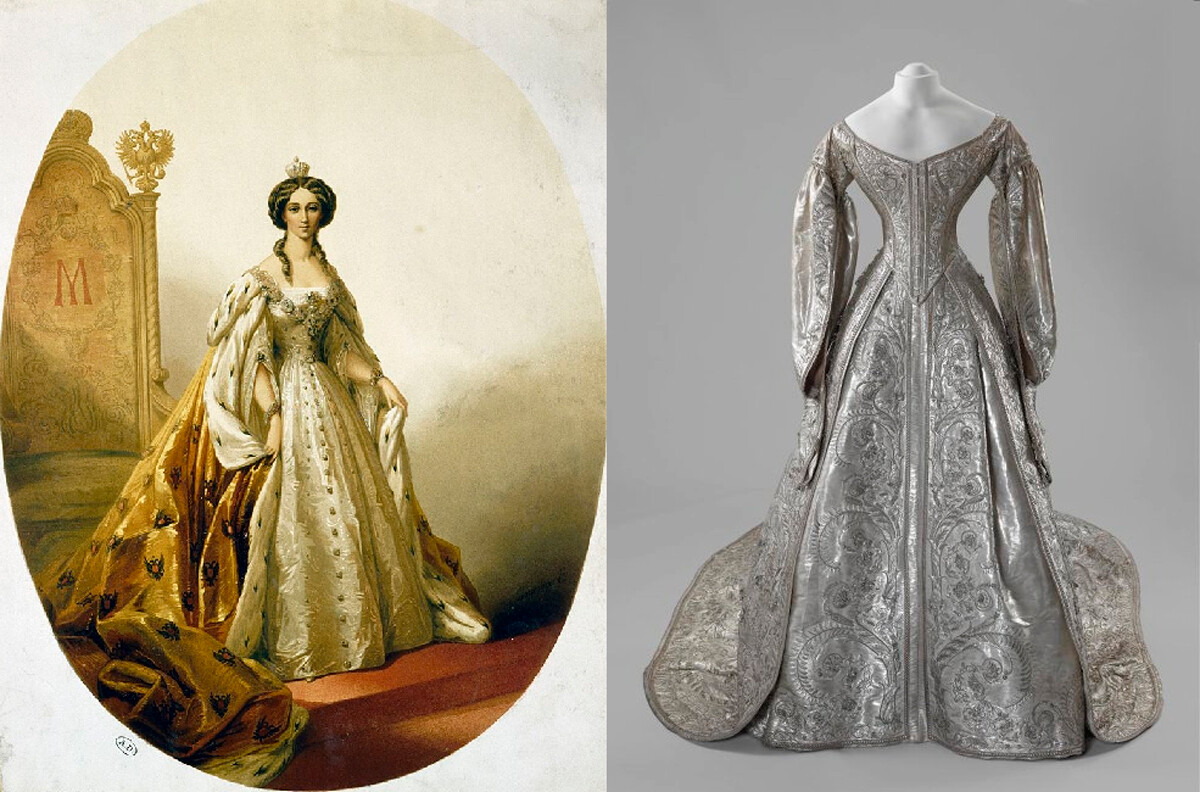
Coronation dress of Maria Alexandrovna; Maria Alexandrovna, 1856, unknown artist.
The Armoury Chamber/Moscow Kremlin Museums; Public DomainJudging by the number of Maria Fedorovna’s still preserved garments by Englishman Charles Worth, the empress was a big fan of this couturier. Worth was very popular in Europe: among his major clients were both royal members and demimondaines. Maria Fedorovna trusted Charles so much that, at times, she would simply send a telegram to the Paris couturier, asking him to make the whole of the outfit, from the design sketch to the choice of fabric, as he pleased.
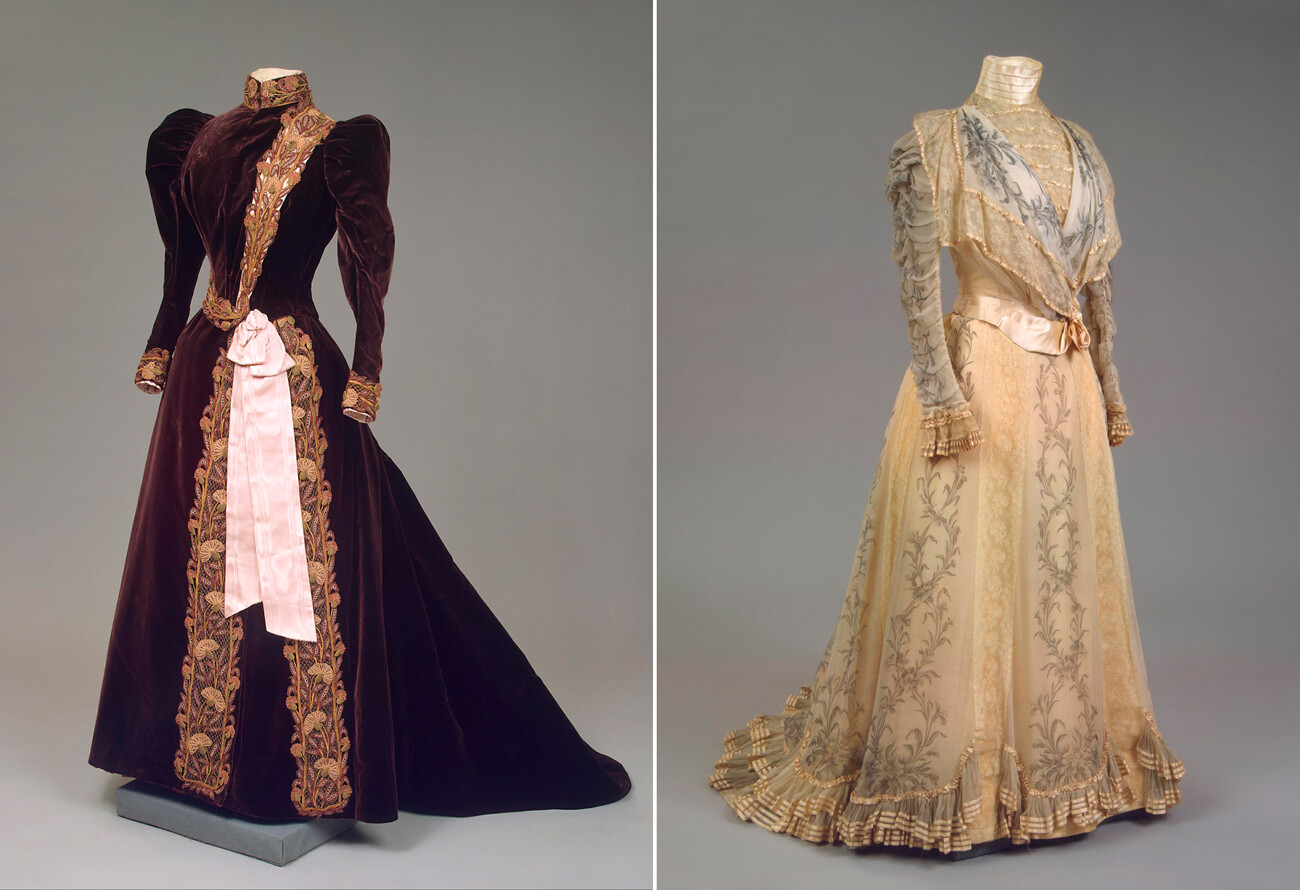
Maria Fedorovna's dresses by Charles Worth.
State Hermitage MuseumThe empress also ordered dresses from other fashion studios, such as “Maro-Walter”, “Morin-Blossier”, “Fromont”.
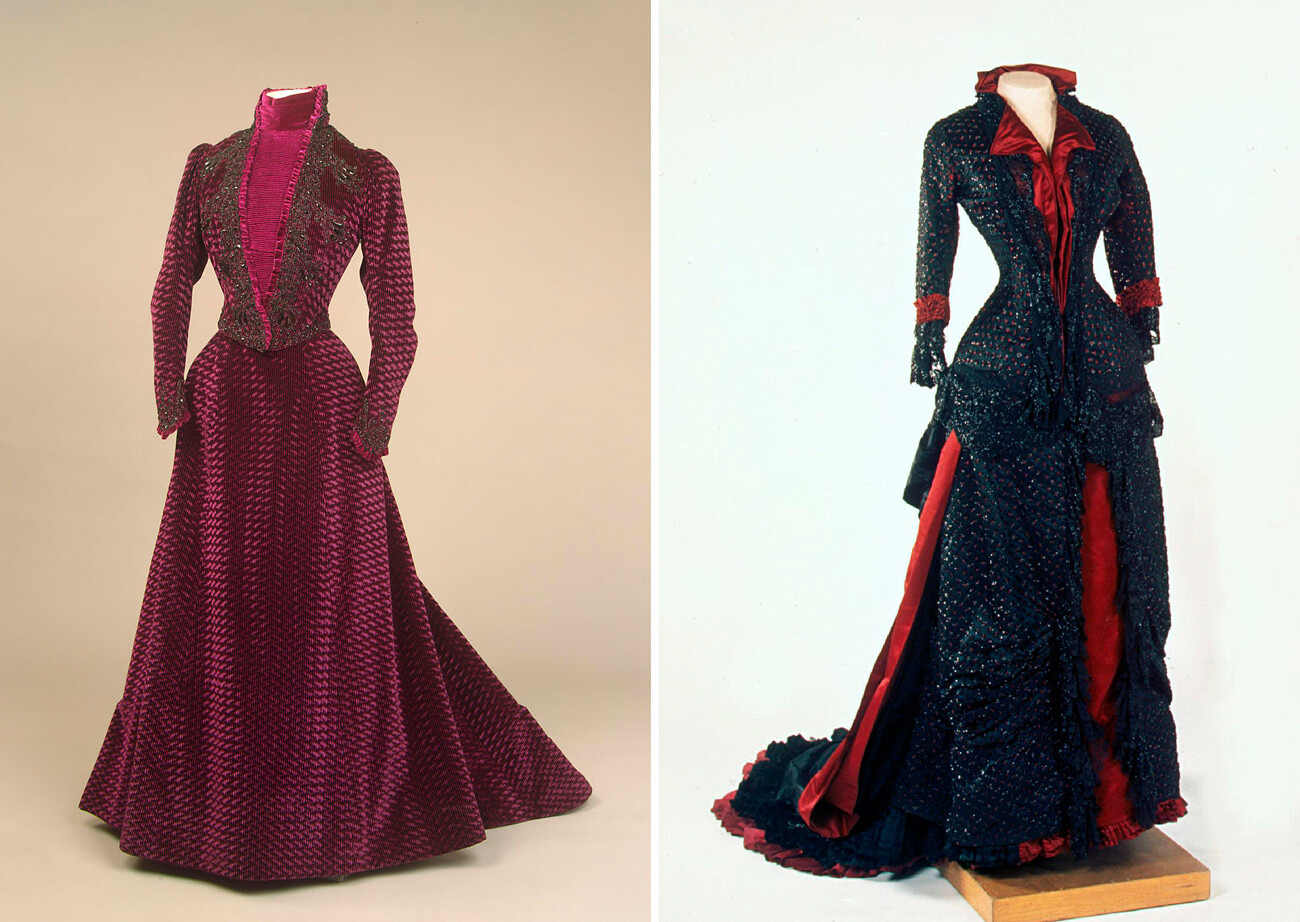
Maria Fedorovna's dresses by "Morin-Blossier" and "Fromont".
State Hermitage MuseumThe last Russian empress, in contrast to her mother-in-law, rather preferred light colors and had most of her garments sewn in Russia: her wardrobe abounded in dresses by August Brizac (a Frenchman by origin, living in. St. Petersburg) and Nadezhda Lamanova, the owner of one of the best tailor shops in Moscow. Lamanova also designed the costumes of some of the guests of the fancy dress ball of 1903. The dress code envisioned wearing Russian national attire. Princess Varvara Alexandrovna Dolgorukaya wrote:
“Some of the most beautiful costumes were custom-made by Lamanova. Every single detail revisited some ancient garments. Nadezhda Petrovna Lamanova’s talent, taste and style were unrivaled. It was the Russian genius of elegance. We were proud of her. Nobody could compare with her, not even the best French fashion houses”.
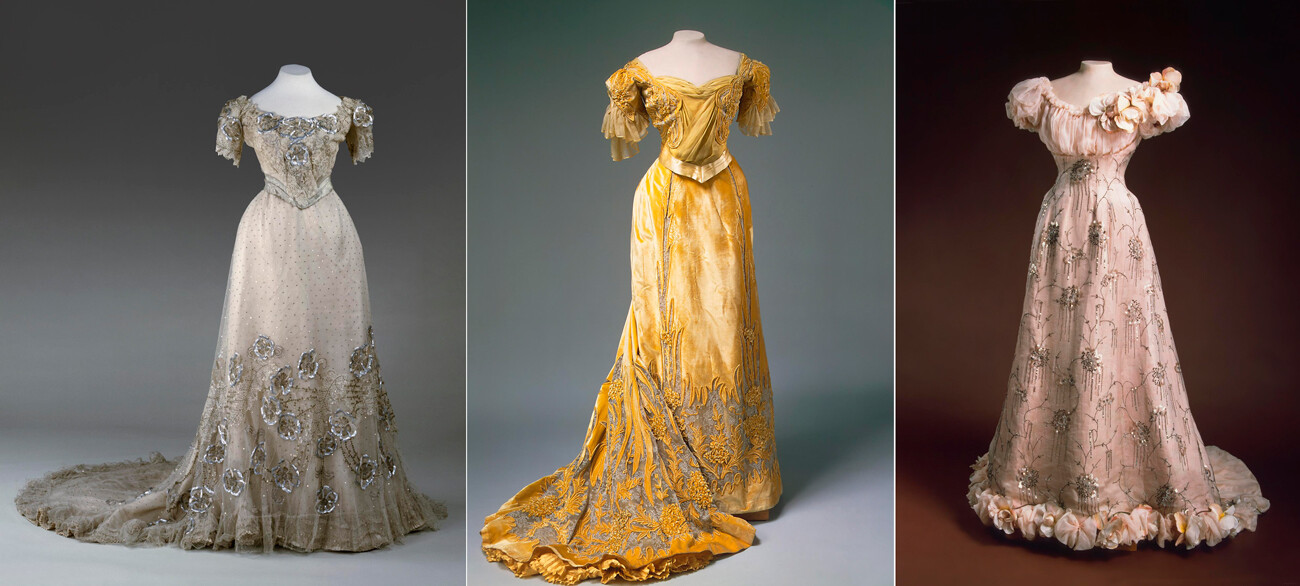
Alexandra Fedorovna's dresses by Nadezhda Lamanova.
State Hermitage Museum
Alexandra Fedorovna's dresses by August Brizac.
State Hermitage Museum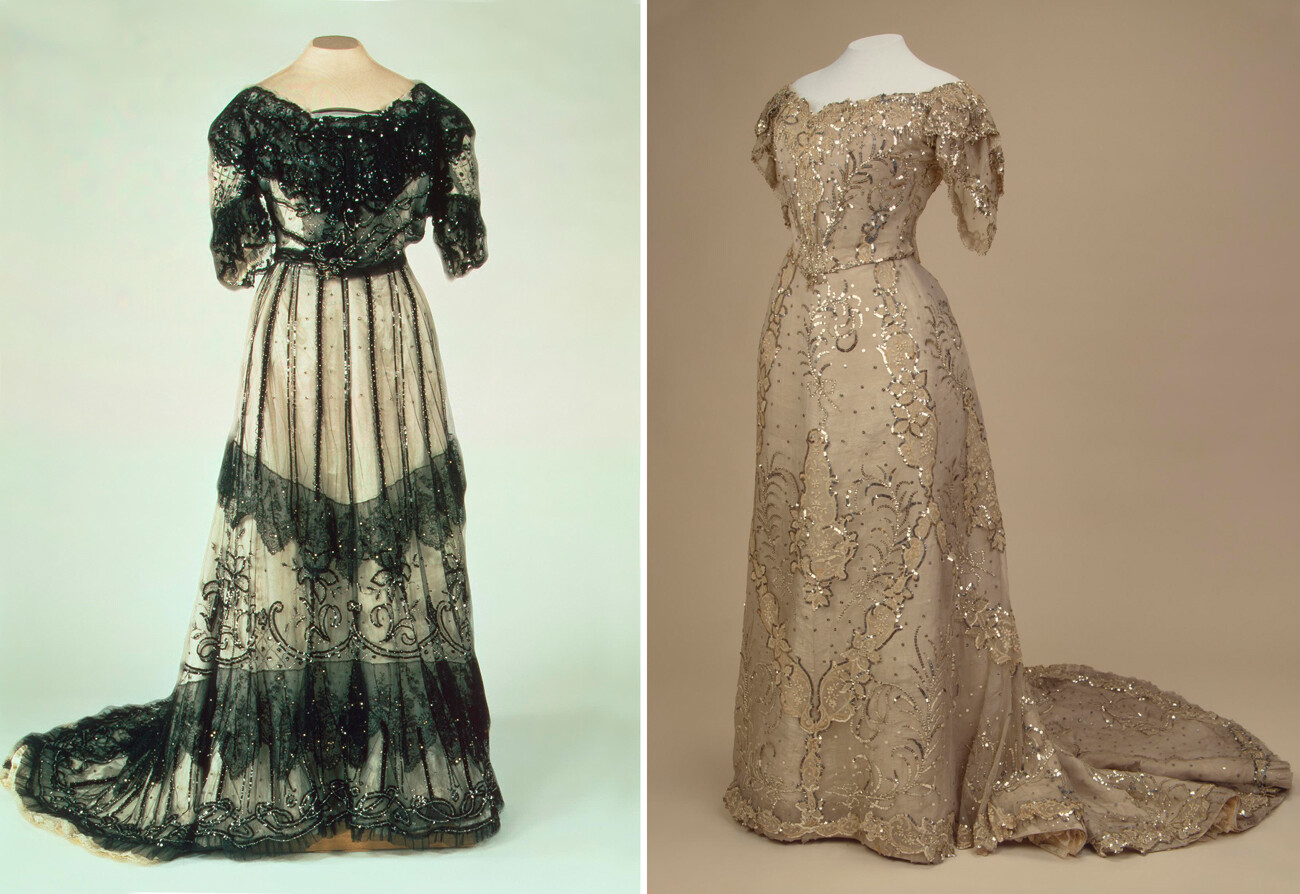
Alexandra Fedorovna's dresses by August Brizac.
State Hermitage MuseumDear readers,
Our website and social media accounts are under threat of being restricted or banned, due to the current circumstances. So, to keep up with our latest content, simply do the following:
If using any of Russia Beyond's content, partly or in full, always provide an active hyperlink to the original material.
Subscribe
to our newsletter!
Get the week's best stories straight to your inbox